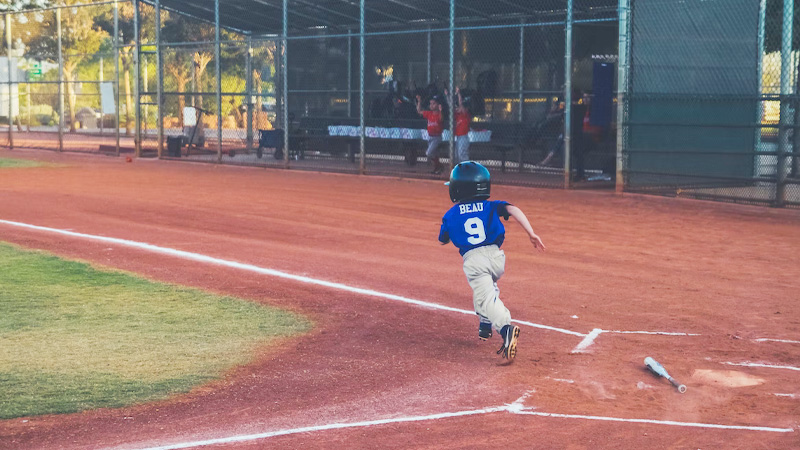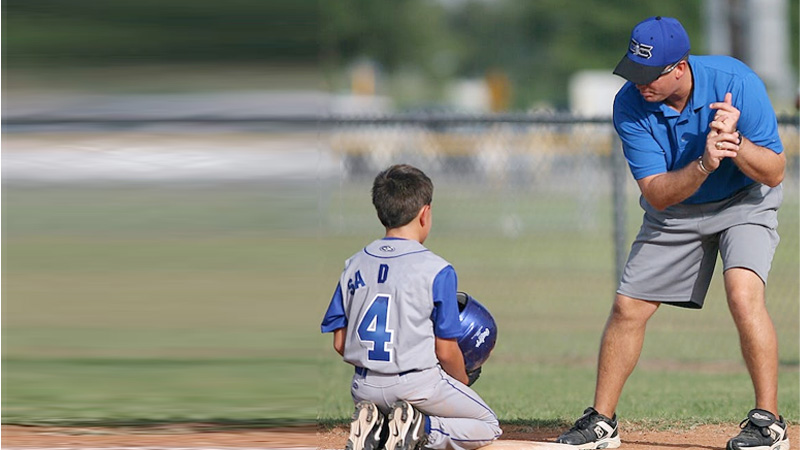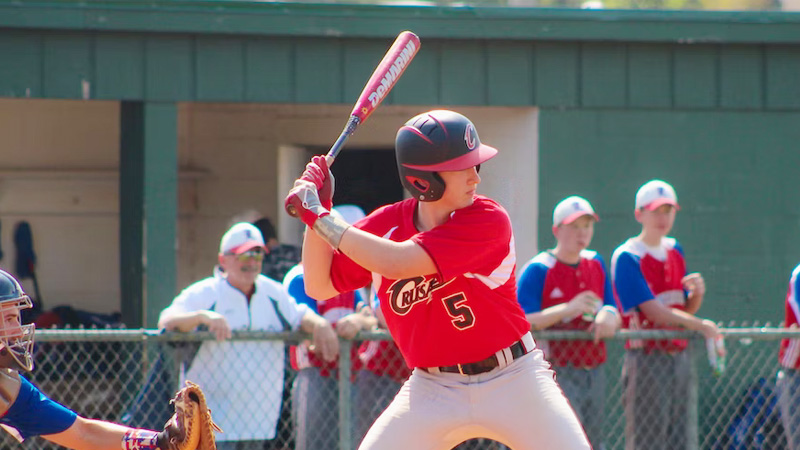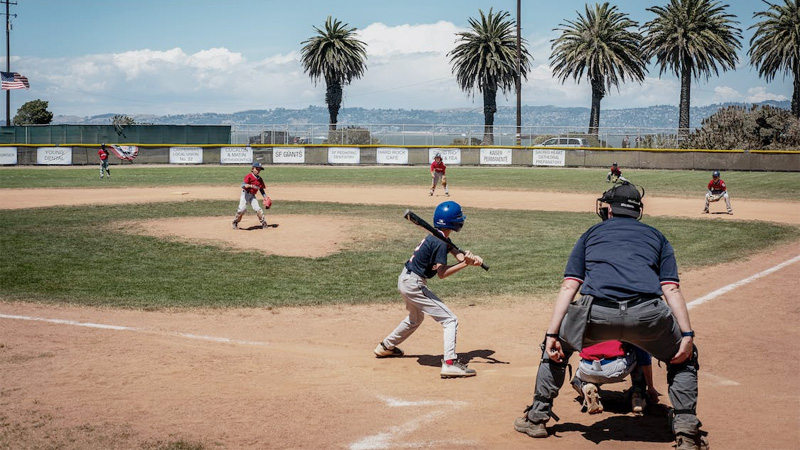Most Americans nowadays dream of seeing their kids as successful Baseball players. That’s why parents are more interested to learn about Little League baseball. But learning the Little League Baseball rules becomes the most critical step that parents often give up their hope for.
However, if you get a well-guided solution, learning and understanding the Little League Baseball rules will be easier. And it is even more essential for you to learn the rules so that you can teach your kids who are going to smash the ball in the Little League ground.
Well, I can help with such a guide that makes things easier like water. Here, I’ve listed all the rules in one place with easy-to-understand language. Hopefully, you will get them easily even if you are a beginner.
Rules for the Little League Baseball

The National Federation of State High School Associations Baseball Rules has set the basic GBSA Little League Rules. The entire set of rules was updated in 2021 and the set has several sections that include rules for specific players and facts.
Rules on Field Dimension, Equipment, and Time Limit
- The space from the rear tip of the home plate to the front edge of the pitching rubber is fixed. It is approximately 48 feet.
- The space should be around 65 feet betwixt all the bases.
- New innings can not begin after 1 hour and 45 minutes from the starting point of the game.
- The game duration is about 2 hours and 15 minutes from the start. The final score is decided by analyzing the last completed inning.
- There will be no time limit in the tournament.
- The baseball bats have to be 2.25 inches in diameter or less.
- The bat used in Baseball should have the marked, “USA Baseball.’’
- No players are allowed to wear the theSteel-spiked shoes.
Rules for the Players and the Coach

- A team will have a minimum of 9 players with a coach.
- Instead of a coach, there can be an adult who is designated by the coach.
- A minimum of 7 players from the original roaster will be there for a team after 10 minutes of the game schedule.
- Only the players who played 2/3 team games can join the tournament. But if a player missed his/her previous team games because of injuries, vacation, or illness, the rule can be waived.
- No spectator can be around the dugouts or on the backstop when the match is running.
- A team cannot field 9 players but can field two players from other teams. But the other team has to be in the same League and can complete the line-up. If there is no player available from the other team, players from the intermediate League can support the team.
- Non-players can’t be on the ground or on the dugouts during the match.
Rules for the Substitutes and the Play Time
- Players of both teams have to play three complete innings until 9 outs.
- Players are eligible to be substituted if necessary during the match.
- A substitute for a player has to be the same or lower skill of the player who is substituted.
- A substitute cannot play for a pitcher or catcher.
- A substitute cannot play more than one inning for a player in a match.
- A team can substitute only two players in a season and even in the postseason.
- To maintain the order, a substitute player has to bat at the bottom.
- If the team fails to field 9 players, a substitute can be used in the playoff game. But the team cannot select the substitute and the League representative or the commissioner can only do so.
Rules for the Batters

- Present players need to follow an order to get the bat on the ground.
- If a player arrives after the match has started, he has to wait to get the bat at the bottom of the order.
- ‘slug-bunting’ is not allowed in the Little League. Batters cannot show bunt and swing away.
- If a player is injured and fails to take his turn for batting, he will be replaced by the last better player who couldn’t reach first base.
- If a team cannot field 9 players, it has to take outs when their batting order will come for the positions the team cannot obtain.
- An injured player cannot continue to be an offensive and defensive player. Generally, a batter has to be the fielder when he is not batting. If a fielder can’t bat when it is his turn, he can’t be substituted and it will be an out. But if a fielder is injured before his batting order has come, he can be replaced by the last better player who couldn’t make it to first base.
Rules for the Pitchers
- A pitcher can only pitch for 3 innings a day and the innings have to be properly consecutive.
- There is no pitch limit weekly for the pitchers but they can make only 3 pitches daily.
- In the case of the extra innings, pitches of each team will have one more inning.
- If a pitcher is removed, he can’t pitch in the game anymore.
- When the pitcher is warming up, they have to wear helmets and facemasks.
- Pitchers cannot make intentional walks around the ground.
- Balks are not allowed for the pitchers as well.
- A new pitcher can have only 8 warm-up pitches in the first inning pitched and for the second one, he will have five warm-up pitches.
Rules for the Fielders
- A team cannot have an infield according to the Little League Baseball rules.
- If a player throws a ball out of the boundary, it will be a dead ball. In this case, the base will be awarded to the runner according to the NFSHSA Baseball rules.
- If a player overthrows the ball in the fair territory or over the boundary, the runner will be entitled to as many bases as the runner can make safely.
Rules for the Base Runners
- Base runners cannot have leadoff. Runners can only advance after the ball will cross the plate.
- The runner will have the base path. But if a fielder is in the path in the possession of the ball or to field a ball, the runner can’t have the base path anymore.
- The runner is bound to avoid slide collision. And what base he is on doesn’t matter, when the defensive player gets the ball or he is about to field a thrown or batted ball. In such cases, if the runner causes a collision to rule interference, he will be out. But if the fielder blocks the base and he is not fielding the ball, then the umpire can rule obstruction and award the runner the base. Here, the fielder can stand in the base path even if he doesn’t have the ball only if he is getting the thrown ball and his position is essential to catch the ball. But he cannot block the base if he doesn’t have possession of the ball. Till then he needs to provide the runner with an open lane toward the base. When the fielder has possession of the ball, no one can call an obstruction to block the fielder.
- If the team has less than 2 outs and there is no runner in the first base, the batter will be selected to get the base when the catcher drops the third strike by any means. But if the team already has the second out, the batter can have the first base and the base situation won’t bother him anyway.
Rules on Umpire’s Decisions
- The judgement calls of an umpire cannot be questioned and it is the final decision.
- Only the umpire, League commissioner, and League representative have the ability to call the end after it began due to a dangerous phenomenon like a curfew, or any natural disaster.
- If there is a tornado and the siren is already sounded, the game will be stopped right then. All the players and other staff will leave the ground instantly to seek shelter. In this case, the match will start from the beginning after the disaster ends and it cannot be resumed.
- If there is a lightning strike, the game will wait for 15 minutes after the last lightning strike was seen. In this case, the League commissioner, representative, and the umpire can take decisions on the phenomena.
- When a coach orders the team to leave the ground without any stoppage or call by the umpire, it will be counted that the team forfeits the match to their will and the opposition will win.
- If the coach has questionable doubts, he needs to be consistent and follow the rules as usual. Later on, he can request the ruling reviews. The umpire’s decision will be then reviewed by the League commissioner or another umpire.
Rules on Conduct
- It’s a coach’s responsibility to ensure that the match will be running in a sportsmanlike manner.
- The umpire, in-charge person, or commissioner can order a spectator, fan, player, or coach to leave the field area, especially if any of them violate the rules of conduct by the GBSA.
- If the ordered person refuses to leave the field, the umpire can call it a forfeit game.
- If a player is ejected from a match by the umpire, commissioner, or in charge, he will have at least 2 months of suspension. Eventually, a player with subsequent suspension can be suspended for the entire season.
- GBSA sets a few rules for the fans, coaches, and the player where they:
- Will not be engaged in any kind of physical altercation
- Can’t smoke or use alcohol or tobacco in the field.
- Will have no right to refuse to follow the GBSA rules.
- Can’t make an intentional violation.
- Fans can’t get together in the dugouts or the backstops.
- Can’t conduct themselves in an unsportsmanlike way, throw their equipment, argue with the officials and the umpires, use profanity, or try to distract players, umpires, or coaches, intentionally.
Rules for the Tournament
- If both teams ended up with a tie after the regular season the tournament will go for:
- Coin Toss Even – In this case, a coin toss will be used as the ultimate tiebreaker. The coach of the first initial whose last name starts with the earliest alphabet will be the one to call the toss.
- Head-to-Head Event – In this event the team that wins more games will advance.
These are the sets of rules for Little League Baseball approved by GBSA. For more information, you check the 2021 Little League Baseball League Rules Summary by JC Parks. The sets of rules won’t seem complicated to anyone who knows the basic rules of baseball properly.
FAQs
Q: How many pitches are allowed in Little League?
The allowed number of pitchers in the Little League is depending on the ages of the pitches.
- If the age limit is 13-16, there can be 95 pitches per day.
- If the age limit is 11-12, there can be 85 pitches per day.
- If the age limit is 9-10, there can be 75 pitches per day.
- If the age limit is 7-8, there can be 50 pitches per day.
Q: How many hours is a Little League game?
A: Initially, a little league match continues for around 1 hour and 45 minutes in total for six innings. It can be extended according to the results of the match.
Q: How many challenges are in a Little League game?
A: Generally, managers have only 1 challenge opportunity in the Little League. He needs to make the challenge and decide within 20 seconds. Also, there are some other rules the manager needs to follow to challenge the match result.
Q: Can you bunt in Little League?
A: Bunting and sub-bunting are not always allowed in the Little League. Bunting is only allowed under some standard bunting rules. Slash bunting is not permitted in any way.
Wrapping Up
Understanding and realizing all the Little League Baseball rules is pretty much an uphill battle, especially for junior players. That’s the reason, a coach or an adult designated by the coach must be on the field to supervise the team properly.
However, I’ve tried to sort out all the rules under specific sections so that you can understand them well. If you are a beginner, you might find them hard to understand. In this case, I would like to suggest you enjoy a few matches of the Little League and try to understand the terms.
For any kind of confusion, you can ask me in the comment section. Best of luck.







